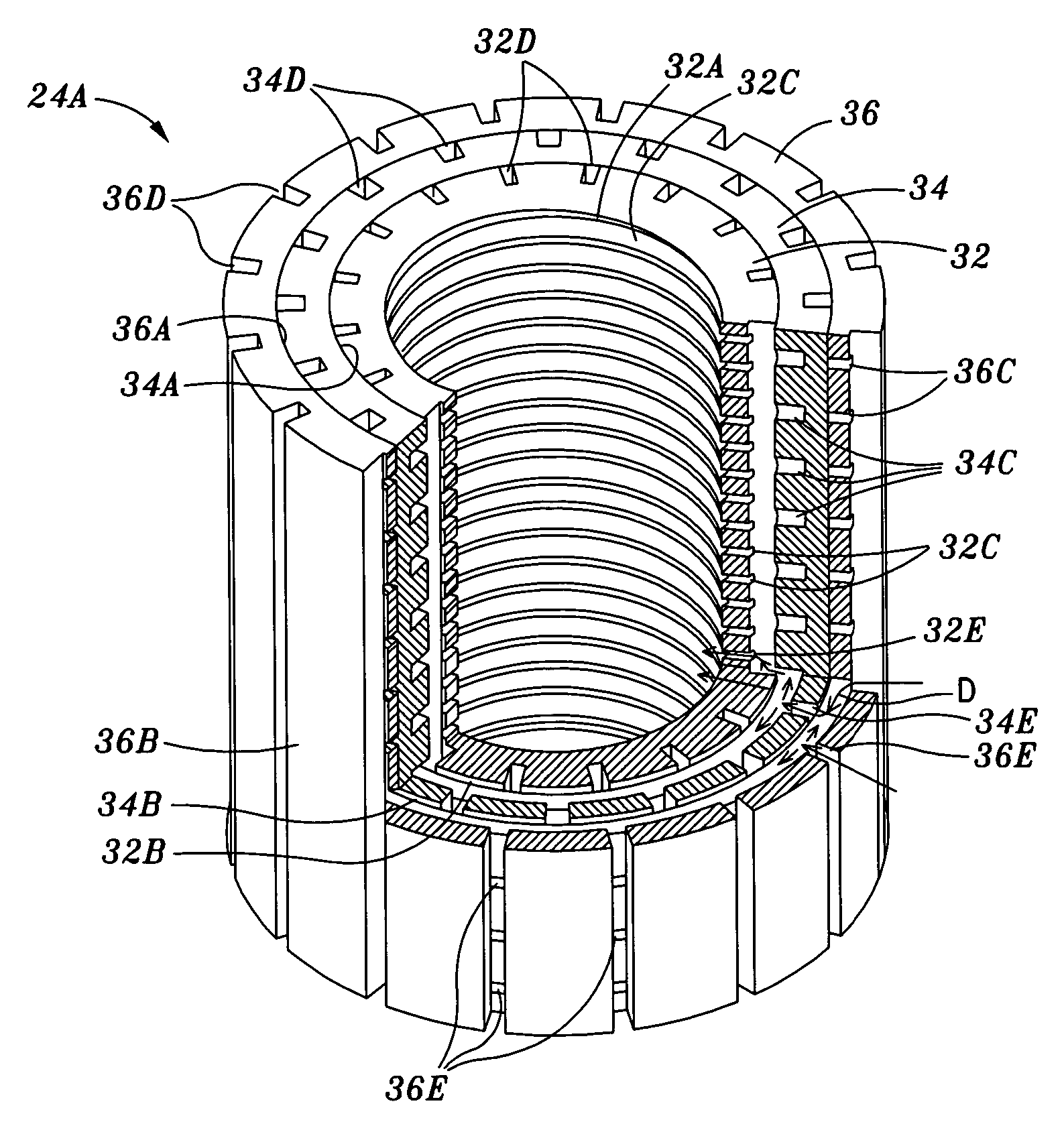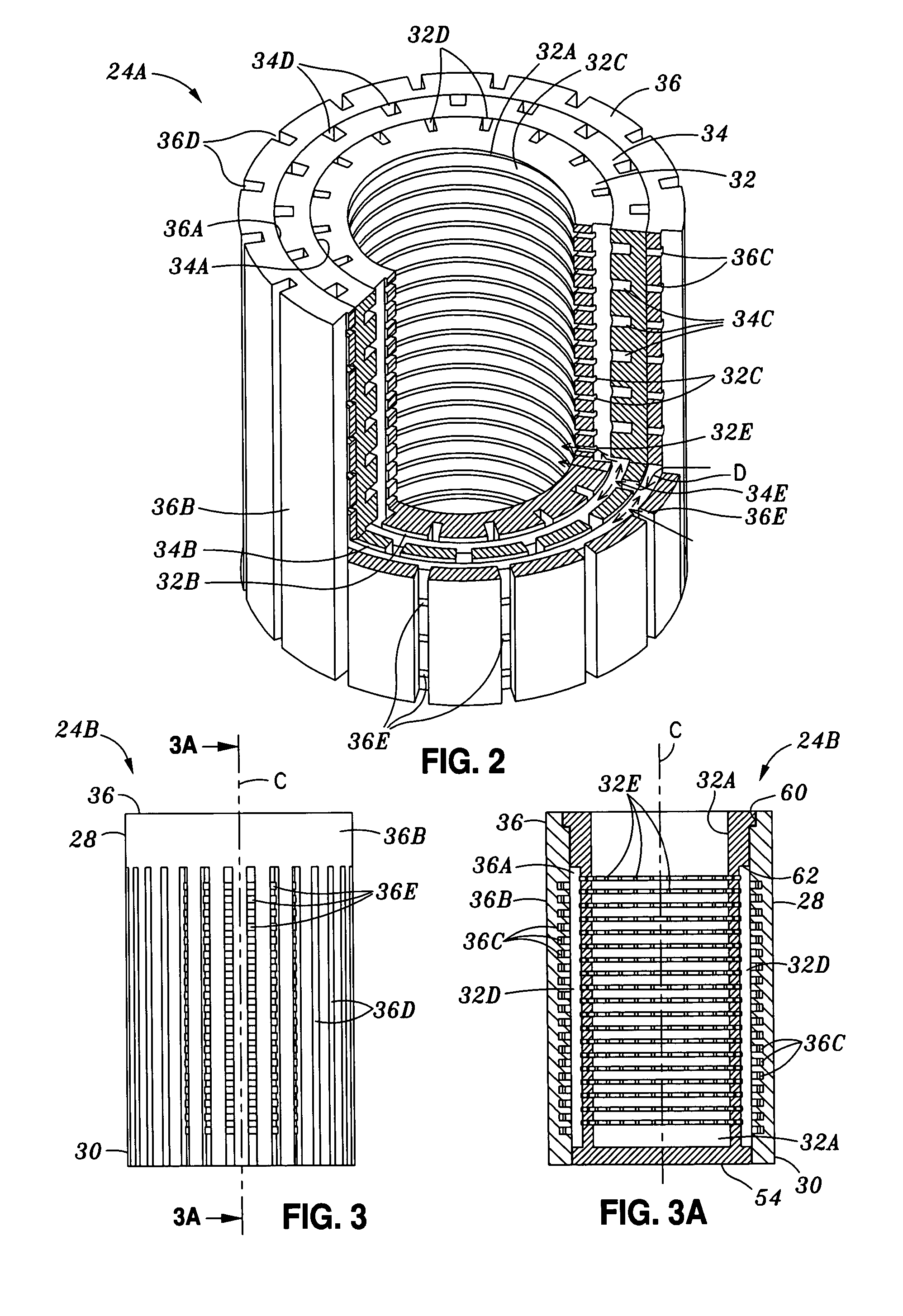Throttle device for high fluid pressures
a technology of high fluid pressure and throttle device, which is applied in the direction of fluid pressure control, process and machine control, instruments, etc., can solve the problems of increasing the risk of erosion or cavitation damage to walls or diffusers, affecting the control characteristics of control valves, and affecting the safety of users, so as to reduce the energy of fluid and increase the energy loss
- Summary
- Abstract
- Description
- Claims
- Application Information
AI Technical Summary
Benefits of technology
Problems solved by technology
Method used
Image
Examples
Embodiment Construction
[0037]Referring now to the drawings wherein the showings are for purposes of illustrating the present invention and not for purposes of limiting the same, FIG. 1 illustrates a fluid control valve 10 comprised of a valve housing 12 having a fluid inlet chamber 20 and a fluid outlet chamber 22. The fluid inlet chamber 20 is in fluid communication with the fluid outlet chamber 22 via a flow opening 68 interposed therebetween. A first embodiment of a throttle device 24A of the present invention is shown in FIG. 1 disposed within the fluid inlet chamber 20 with a piston body 14 being slidably disposed within the throttle device 24A. A second embodiment of the throttle device 24B of the present invention is shown in FIG. 1 disposed within the fluid outlet chamber 22. A third embodiment of the throttle device 24C of the present invention is shown in FIG. 4 and 4A.
[0038]It should be noted that the first, second and third embodiments of the throttle devices 24A, 24B, 24C of the present inven...
PUM
 Login to View More
Login to View More Abstract
Description
Claims
Application Information
 Login to View More
Login to View More - R&D
- Intellectual Property
- Life Sciences
- Materials
- Tech Scout
- Unparalleled Data Quality
- Higher Quality Content
- 60% Fewer Hallucinations
Browse by: Latest US Patents, China's latest patents, Technical Efficacy Thesaurus, Application Domain, Technology Topic, Popular Technical Reports.
© 2025 PatSnap. All rights reserved.Legal|Privacy policy|Modern Slavery Act Transparency Statement|Sitemap|About US| Contact US: help@patsnap.com



